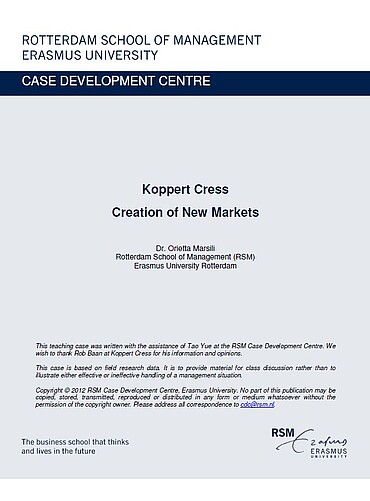Citation Note
Based on field research; 12 pages.
Follow the 'handle' link to access the Case Study on RePub.
For EUR staff members: the Teaching Note is available on request, you can contact us at rsm.nl/cdc/contact/
For external users: follow the link to purchase the Case Study and the Teaching Note.
Objective
This case aims to help students understand the challenges that an entrepreneurial organization faces in sustaining growth moving from its success in creating a high-value niche market of professional users to the prospect of expanding in the consumer market. The students will gain a better understanding of how a young company and the entrepreneur, who started it, can achieve “value innovation” (Kim and Mauborgne 1999) and make it the key source of competitive advantage over time.
description
A Dutch entrepreneur carved out a lucrative niche by focusing on the up-market in the cost-competitive horticultural sector. With the ambition to expand, he sought to enter the mass consumer market.
Abstract
Koppert Cress, a Dutch horticultural company founded by Rob Baan, specializes in growing and selling micro-vegetables that promote health or prevent disease. Its business began under the name Koppert Trading before Baan acquired it in 2002. In the five years after the takeover, Baan redesigned the business model, developed new products, expanded production capacity, invested in the latest technology, enlarged the work force, recruited talented managers, and made Koppert Cress a world-class player in the niche market of chefs and restaurants. Its business model centered on innovative price setting. Unlike other Dutch horticultural companies, Koppert Cress detached itself from auctions that determined agricultural prices. Instead, it made up ‘imaginative’ prices, selling high premium products by providing unique added value to customers. Baan contemplated on the option to expand his business to the consumer market, a dream he had cherished ever since he went into the agricultural business over 20 years before. He wondered whether he had all the resources and capabilities in place to create better value for mass consumers without disturbing his up-market niche. In addition, as the consumer market was harder to predict than the chefs’ market, he had to devise the best strategy to minimize risk and increase his chance of success.
usage
This “unusual” case deals with a situation that one does not see in a standard classical case. It examines the risks and opportunities an entrepreneur faces moving from value innovation to business expansion, and how to examine capabilities and chances for success.
